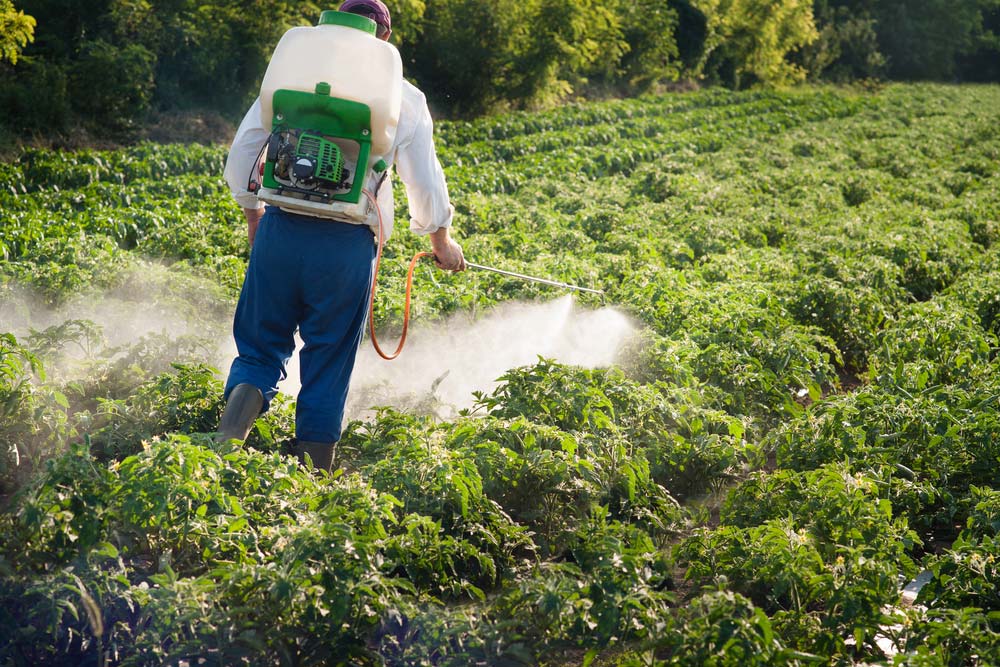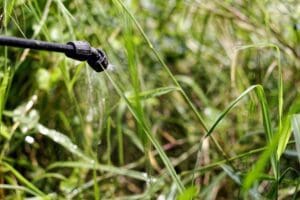Introduction
As of November 2021, Syngenta, a primary producer of paraquat, had invested 187.5 million USD to settle court cases against farmers who are suing the company over risks associated with paraquat exposure. Experts estimate that by the time settlements are concluded, Syngenta could lose up to billions of dollars in lawsuits.
So, what exactly is it about paraquat that is creating such a stir?
Well, for starters, the herbicide is highly toxic, and ingesting even a few drops can kill you, as confirmed by the United States Environmental Protection Agency (EPA). But more than that, paraquat exposure has been linked to increasing the risk of developing Parkinson’s disease (PD), an untreatable neurological disorder that inhibits movement and coordination.
Research studies conducted by The Unified Parkinson’s Advocacy Council reported to the EPA that exposure to paraquat during your late teens and early twenties increased your risk of developing the disease by 200 to 600 percent.
But what do the dangers associated with paraquat mean for the general population?
If you, or anyone you know, was exposed to paraquat and ended up developing Parkinson’s disease, you could be in the position to file a lawsuit against Syngenta. That is why it is important to consult an attorney specializing in paraquat poisoning so that you can have a chance at receiving financial and medical compensation for damages inflicted by paraquat exposure.
What You Need to Know About the Paraquat Controversy
What is Paraquat?
First produced for commercial use in 1961, paraquat dichloride has been one of the most commonly used herbicides in recent history.
Its low cost and high toxicity make it a popular choice as it can eradicate weeds that are even resistant to the highly potent herbicide, Roundup, which contains glyphosate. Currently, paraquat has been used on over 100 different types of crops.
Because of its lethality, EPA has discerned only licensed professionals capable of using the herbicide. There are also limitations to where paraquat can be used. For example, it is not to be used in home gardens, parks, golf courses, schools, or playgrounds.
Who manufactures Paraquat?
Paraquat is produced in around 377 countries globally. Among these, one of the major manufacturers of the herbicide is Syngenta, an international agrochemical giant with headquarters in Switzerland.
When produced by Syngenta, paraquat goes by its brand name “Gramoxone”. The Swiss giant is one of the biggest suppliers of paraquat to the United States.
Is Paraquat Safe?
Paraquat is known to be 28 times as toxic as glyphosate (Roundup). Due to its extreme degree of toxicity, the use of the herbicide is extremely restricted. 33 countries have completely banned producing, selling, or using paraquat. These countries include Canada, Finland, Norway, and Sweden amongst many others.
The US, however, has not yet deemed it illegal to manufacture or use paraquat, despite the Unified Parkinson’s Advocacy Council writing a letter urging the EPA to ban the herbicide based on its association to developing Parkinson’s.
To counteract its lethal effects, the EPA has placed heavy restrictions on the use of paraquat. It cannot be sold to individuals under the age of 18 and its transportation on public roads is banned. Along with this, anyone handling the herbicide needs to have adequate licensing.
Despite these countermeasures, paraquat is still considered dangerous. The compilation below lists some of the effects associated with immediate and long-term exposure to paraquat through continuous use or accident ingestion or inhalation.
Immediate side effects to paraquat exposure:
- Stomach cramps and discomfort
- Diarrhea
- Hypotension
- Nausea
- Vomiting
- Seizures
- Inflammation of the mouth and throat
- Coma
Long term effects caused by paraquat exposure:
- Seizure
- Liver damage and potential failure
- Edema in the lungs
- Malaise
- Tachycardia
- Acute renal failure
- Heart problems
- Lung scarring
- Respiratory failure
Along with these risks, recent studies have shown a link between paraquat exposure and the risk of developing Parkinson’s disease.
What is Parkinson’s Disease (PD)?
Parkinson’s disease (PD) is a progressive neurodegenerative disorder that inhibits motor function. PD affects more than 10 million people globally and although the disease itself is not fatal, the CDC lists its complications as the 14th cause of death in the US.
In Parkinson’s, dopaminergic neurons in the substantia nigra of the brain are primarily affected. These nerve cells degenerate, causing a decline in dopamine levels. Lack of the neurotransmitter dopamine leads to abnormal brain functioning that expresses itself in PD symptoms like uncoordinated movement, slurred speech, and muscle rigidity.
Patients suffering from Parkinson’s disease exhibit signs and symptoms that range from tremors, slower motor functioning, loss of balance and control, dementia, and depression.
Although Parkinson’s disease is an idiopathic disorder, it has been broadly categorized into arising from either genetic or environmental factors. One such environmental factor that is proving to increase the risk of developing PD is prolonged exposure to paraquat.
Paraquat and Parkinson’s Disease
Perhaps one of the major controversies surrounding paraquat is its link to Parkinson’s disease.
A collaborative study conducted in 2011 by the National Institute of Environmental Health Sciences (NIEHS), which is a branch of the National Institutes of Health, and the Parkinson’s Institute and Clinical Center, concluded that people who were exposed to the pesticides Paraquat and Rotenone were 2.5 times more likely to develop PD than people with zero exposure to these chemicals.
The researchers’ sample population consisted of 110 people with Parkinson’s and 358 controls from the Farming and Movement Evaluation (FAME) Study. The FAME study is a case-control research that is a part of the Agricultural Health Study and had a total of 90,000 participants.
Recent studies including the above-mentioned NIEHS research have concluded that exposure to herbicides like paraquat is a major environmental factor in developing Parkinson’s. paraquat has been proven to act as an oxidative stressor, which upon exposure, increases the probability of acquiring PD. Rotenone, another chemical that was a part of the study, has been proven to act as a mitochondrial complex I inhibitor.
The NIEHS study, coupled with research from JAMA (Journal of the American Medical Association), suggests that the positive association between exposure to paraquat and developing PD may even be strong enough for the relationship to be causal. At the moment this is a hypothesis, but what research has proven is that exposure to paraquat does increase your risk of acquiring Parkinson’s disease.
So, what this means is that although we are not yet certain that paraquat exposure by itself is enough to cause Parkinson’s, research has proven that subjection to the herbicide increases the risk of developing PD.
Another important study that provides evidence for the link between paraquat exposure and Parkinson’s is a research paper titled “Paraquat Inhalation, a Translationally Relevant Route of Exposure: Disposition to the Brain and Male-Specific Olfactory Impairment in Mice”, from the journal Toxicological Sciences.
The study concluded that there is a greater chance of developing Parkinson’s if you have been exposed to paraquat, making its results synonymous with those of other studies referenced earlier in this article.
The research also showed how paraquat killed neurons responsible for producing dopamine in mice by increasing oxidative stress. Based on this, paraquat-induced oxidative stress could also destroy dopaminergic neurons in humans, leading to the development of Parkinson’s disease.
One of the research papers to finally cement the strong association between paraquat and Parkinson’s was published in 2014 in the Annual Review of Pharmacology and Toxicology.
The paper discussed the results of 5 case-controlled studies which confirmed that exposure to paraquat resulted in an increased risk of developing PD. It was the combined result of these studies that pushed the EPA into reviewing the safety of paraquat in 2016.
Filing a Paraquat Lawsuit
Why should you file a paraquat lawsuit?
The association between paraquat and Parkinson’s has only been made public knowledge recently.
You will be eligible to file a lawsuit in the case that you were exposed to paraquat and then developed Parkinson’s disease after your exposure to the herbicide. If you believe that you or someone you know has developed Parkinson’s disease as a result of exposure to paraquat, it is advisable to file a lawsuit.
This is because a lawsuit can help you receive compensation for any damages induced by the highly toxic herbicide. These compensations can help with:
- Paying for medical treatment that is not covered by your insurance
- Income lost by unemployment due to PD
- Traveling costs incurred while seeking medical assistance for PD
- Expenses for any medical equipment that you might need in the case of a disability (for example, a wheelchair if walking becomes difficult)
- The costs of any counseling needed to cope with the mental anguish of developing PD
- In a worst-case scenario, funeral expenses
- Help increase public awareness about the risks associated with paraquat use
How can you file a paraquat lawsuit and who can you sue?
To file a lawsuit, the first step is to call a law firm and contact an attorney. When looking for an attorney to represent you, here are some things that you should be keeping an eye out for:
- Whether or not the law firm offers a free case review on your claim
- The types of cases the firm has represented in the past and their outcome (representing cases similar to the paraquat case, like the Roundup case, would be a good sign)
- How long has the attorney been practicing?
- Is the firm well-reputed (what is their past success in meeting their clients’ needs)
When you meet an attorney, they will ask you questions to discern the strength of your claim. In this case, it would be a good idea to prepare any material that you can use as evidence to prove your exposure to paraquat and your diagnosis of Parkinson’s disease.
Relevant material can include health records, doctors’ prescriptions, medical bills and any related receipts. This information serves as concrete evidence and also helps draw a timeline of your diagnosis which can be compared to the time you were exposed to paraquat.
To prove your paraquat exposure you need to document information like working at a farm that used paraquat, working as a licensed applier, or living near an industrial farm.
Paraquat lawsuits are filed against current manufacturers of paraquat. This includes the Swiss giant Syngenta and other companies like Chevron Philips. The main defendant in the paraquat lawsuits has generally been Syngenta since it is the primary manufacturer of Gramoxone in the US.
How much does it cost to file a paraquat lawsuit?
The process of filing a lawsuit against paraquat is fundamentally free of cost until you file your case and receive a settlement.
To start with, most law firms generally conduct a free case review that will confirm whether you are eligible to file a lawsuit or not. Once you have been deemed eligible, the firm will work on a contingency basis. This means that you are not liable to pay any amount up front or as an hourly or weekly wage. If you win your case and receive a settlement, your attorney and firm will take their fee as a portion of the settlement and the remaining amount will be yours.
This means that your firm will only receive a payment if the verdict is in your favor. If you lose the case, you will not have to spend any money on it. This makes it easy for people from any financial background to seek legal representation.
What is important to remember is that all firms may not operate on a contingency basis. This is why you need to communicate effectively with your attorney and clear all your financial queries before you file a lawsuit.
Paraquat Lawsuit Settlement Amounts
What is the current status regarding paraquat lawsuit settlement amounts?
The first lawsuit against paraquat was filed in Missouri in 2017, and the plaintiff was suing Syngenta. Since then, lawsuits have been filed in multiple states across the US.
The most recent update is from March 1st, 2022, and according to that, there have been 688 paraquat Parkinson’s disease lawsuits filed in a paraquat class action MDL. An MDL essentially means that all the lawsuits in federal court relating to paraquat will be integrated under one judge. Along with this, there is an estimate of 75 paraquat cases waiting to be processed in state court. There has not yet been a trial in court and the first trial is to take place in November 2022.
Here are some of the recent paraquat lawsuits:
- Doug Holliday, a farmer from Iowa, filed a lawsuit against Syngenta and Chevron on behalf of himself and others. He is suing the companies for exposing the public to paraquat and failing to issue appropriate warnings about the risks of developing Parkinson’s. Holliday has been spraying paraquat on crops since the 1990s.
- Ellis Pratt from Illinois filed a lawsuit, claiming that prolonged exposure to paraquat led to him developing renal disease. Pratt suffered from contaminated drinking water for 11 years and developed kidney disease in 2021.
- Robin Adams from Missouri filed a lawsuit after developing Parkinson’s disease after more than 15 years of exposure to paraquat. She and her husband used to regularly spray crops with the herbicide.
What factors determine the amount of settlement you are liable to receive?
In the case of the paraquat lawsuits, since there are multiple plaintiffs, the settlement you are liable to receive depends on factors such as the following:
- The total amount of final settlement
- The severity of your damages
- Tangible evidence of your damages
- Legalities like whether there will be a global settlement or not
Once the MDL judge begins to hold integrated trials, known as “bellwether trials”, for the paraquat cases, the concluding result will determine the type of settlement plaintiffs will receive. If the bellwether trials are in favor of the plaintiffs, we will have a “global settlement”.
Under the global settlement, a total settlement amount will be decided and plaintiffs will get a portion of this based on the severity of their damages. Those with more severe injuries will receive a greater individual settlement than those who suffered less damage.
What is the estimated average settlement of a paraquat lawsuit?
Since the trials for the paraquat lawsuits have not yet started, the amount of settlement can only be estimated.
A Roundup lawsuit that concluded in 2020 saw manufacturer Bayer pay over 10 billion USD as a global settlement.
The average settlement of a Roundup lawsuit has not yet been publicly disclosed but experts estimate the range to be between $5000 to $250,000, based on the severity of an individual’s damage.
The similarity between the Roundup lawsuits and the paraquat lawsuits makes it comparable to estimates for the average paraquat lawsuit.
Conclusion
At the end of the day, Parkinson’s disease is a serious, life-debilitating disorder, and getting diagnosed with PD is surely devastating.
Knowing that such an outcome could have been prevented if paraquat manufacturers had taken appropriate measures, issued warnings, and been transparent about their product only makes the matter worse.
This is why if you or a loved one is a victim of the herbicide’s toxicity, it is in your best interest to file a lawsuit and get the compensation you deserve.




